#filipino food culture
Photo
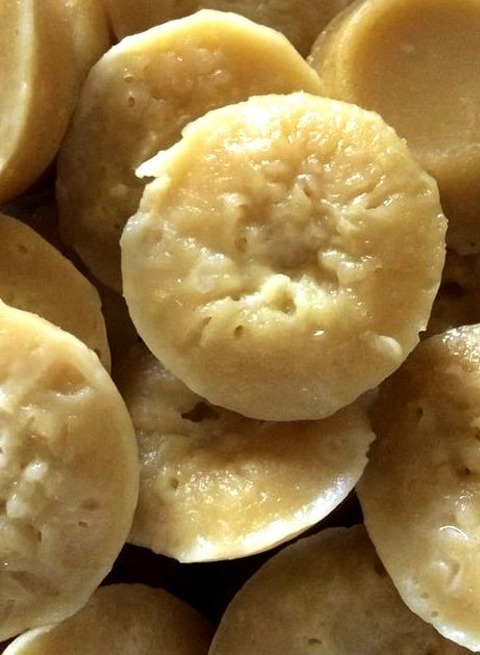
Puto Recipe
The cuisine of the Philippines combines flavors and cooking methods from different parts of the world. This cheese-topped, slightly sweet steamed cake is delicious as a dessert or an afternoon snack when paired with fresh fruit, chocolate, or jam.
4 notes
·
View notes
Photo
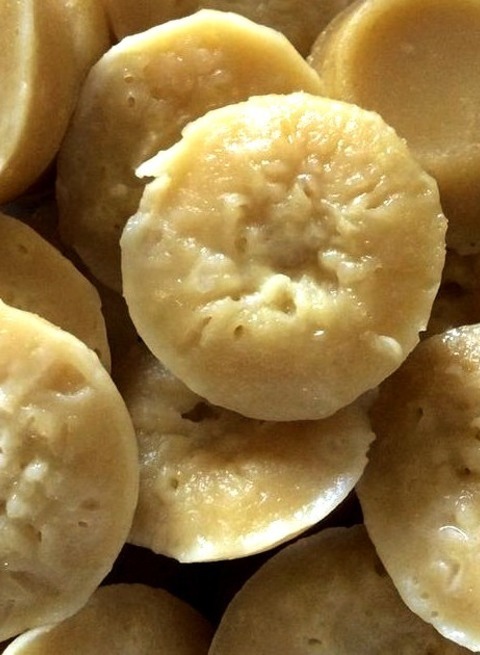
Filipino - Puto
The cuisine of the Philippines combines flavors and cooking methods from different parts of the world. This cheese-topped, slightly sweet steamed cake is delicious as a dessert or an afternoon snack when paired with fresh fruit, chocolate, or jam.
0 notes
Photo

Recipe for Puto
The cuisine of the Philippines combines flavors and cooking methods from different parts of the world. This cheese-topped, slightly sweet steamed cake is delicious as a dessert or an afternoon snack when paired with fresh fruit, chocolate, or jam. 6 eggs, 1 can evaporated milk, 4 cups all-purpose flour, 1 tablespoon baking powder, 2.25 cups Edam cheese shredded, 2 cups white sugar, 1.5 cups water
0 notes
Text
Food export show IFEX Philippines returns on site this September
Food export show IFEX Philippines returns on site this September
IFEX Philippines, the country’s long-running and biggest export-oriented food show, is back on the trade show floor at the World Trade Center Metro Manila in Pasay City from September 22 to 24, 2022.
With the theme “Discover your love affair with Filipino Flavors,” the event is set to offer international food importers, buyers, and aficionados a multi-sensory food experience which has been…
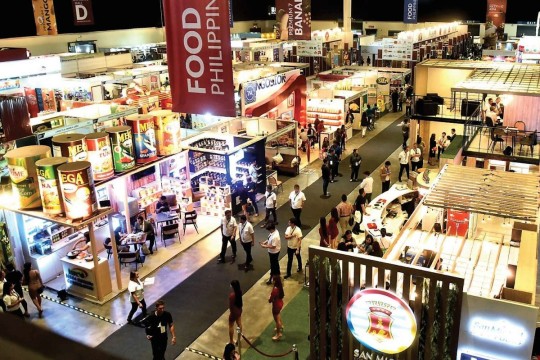
View On WordPress
0 notes
Text
The thing is. Bad/gross food is rarely a DISH - when food is bad it's because it's been badly made, whether because of skills or available ingredients. but a dish p much only exists recognisably and has a name because someone likes at least one version of it.
which is to say. there isn't really a way of naming a dish, school of dishes or specific food culture and going EW ISN'T THIS DISH UNILATERALLY CONCEPTUALLY DISGUSTING without denigrating quite a lot of people.
like you don't have to like it in any form. but it's eaten and shared because it's good to a not insubstantial number of people when cooked right.
(and I don't really understand how you approach that with total incuriosity when it's a dish you haven't tried like. ARE rocky mountain oysters good? Maybe! I would very much eat some to find out!!!!)
this is actually something the British food poll did in a way the American ones I've seen haven't really - they described how the food they're imagining is, specifically, badly prepared (grey meat and veggies; unseasoned shepherd's pie). which is wildly tipping the scales by calling it British Food but. like. that is an on point definition of why that food is gross.
(this also applies to American chocolate, which like. Broad category but I think most of us understand this refers to low-cocoa high-sugar chocolate, probably with bucolic acid. so we are being invited to imagine Badly Made Chocolate not. the concept of chocolate)
personally I just think it's very rarely a good or funny idea to shittalk how gross any given food culture is. partly because food is important and culturally evocative for most people, partly because it's very...alienating? to be like WHO COULD EAT SUCH A THING? just because you wouldn't, and largely because to be frank it says more about you than about the food that you have so little imagination or curiosity that you can't imagine why a food might be enjoyable to folks who aren't you.
yes this includes jello salad, I would like to try it. ONCE. if it wasn't appealing to someone it wouldn't be so widespread.
#red said#like. as if talking shit about people for eating offal or offcuts particularly hasn't always been hugely loaded in race and class terms#ewww can you believe filipinos eat tripe. can you believe Chinese people eat pig feet?#YEAH I CAN AND YOU SHOULD TOO. Those are normal parts of an animal to eat and it's weird that you think it's weird#but it's also. a really common racist trope right? like. how often does racist rhetoric mention food being 'weird' or 'smelling bad'?#because shitting on someone's food and calling it gross is a really good shortcut to shitting on them and their cultures#implying they're dirty or animalistic or cruel or undiscerning or have bad taste#this isn't crying RACISM AGAINST WHITE PPL btw#just saying. maybe in general we should shut the fuck up about finding entire schools of cooking gross#and it's interesting you know. bc Americans in the notes of the American food posts recognise there are race and class sensitivities there#but not that there might be similar sensitivities around mocking another country's food
954 notes
·
View notes
Text


The Shaved Ice/Tropical Parfait snack item on the Tamagotchi Uni highly resembles a Halo-Halo from the Philippines!
80 notes
·
View notes
Text
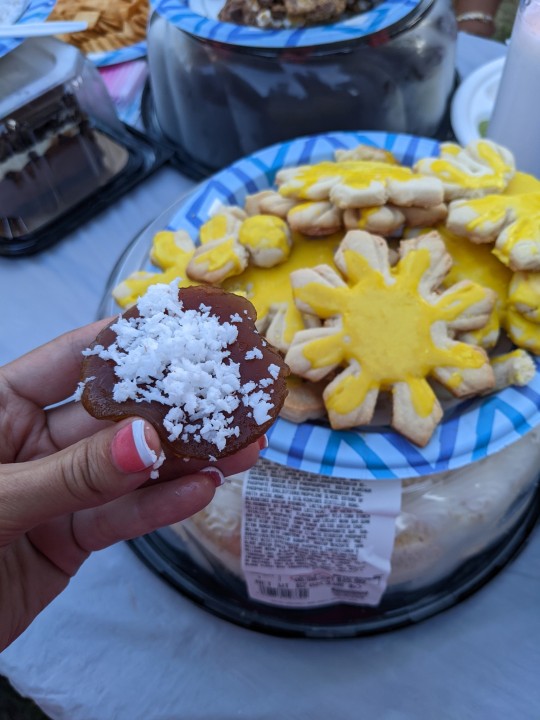
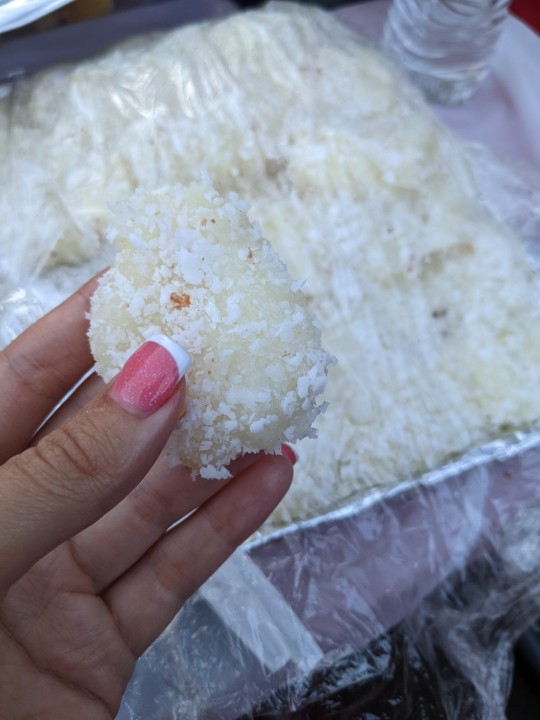
Different kakanin (rice cake) deserts at my big fat Filipino reunion.
A core memory is being the same height as a wedding banquet table and walking off with handfuls of palitaw to gorge on as a kid
My favorite is the white palitaw made with pounded sticky rice or mochi flour but the kutsinta, the brown rice cake was also delicious, it has an amazing chewy texture. Both are coated in fresh grated coconut 🥥
If you're interested in recipes, this month's newsletter will include my Lola Inday's Palitaw recipe just sign up on my author website !
63 notes
·
View notes
Note
OLIVE omg recently my white friend recommended to me apple chips and hummus together as a snack so I have experienced your horror !
Sincerely, an east asian hummus lover, thank you for this wonderful food ❤️❤️
ps my personal ranking of ways to eat humnus is 1. spoon 2. bread or other carbs 3. veggies [...] 642947392. apples
listen man. my friend is half filipino but unfortunately she is whitewashed as hell and lives her life as a white person. so she has a white sense of taste which means i had to POUND SOME SENSE INTO HER WHEN SHE RECCOMENDED HUMMUS WITH APPLES 😭😭😭 genuinely horrified that people actually eat that astaghfirullah. white food needs to die
#i don't think she's culturally filipino#like her parent was just a white person born in the philippines#but wasn't like. part of the community or whatever. they moved back to america later#so yeah she's still white as hell and it's soooooo unfortunate whenever she tries to talk about food
14 notes
·
View notes
Text
Celebrating Christmas in the Philippines: The Christmas Capital of Asia (Part 2)

A parol shop selling other Christmas decorations posted by yeowatzup (2005) via Wikimedia
This is a second part of a longer post on Christmas in the Philippines. Part 1 can be found here.
(Also I know this is a little late, had some personal stuff this holiday season so sowwyy)
Practices in the Present Day
Christmas traditions today are a mixture of both traditionally Hispanic and American practices with some new and additional modern things added in from the past century. Most of these traditions are still done by a lot of Filipino families today and continue to be icons in Filipino culture.
The Longest Christmas

An image of a calendar posted by Benham Norouzi (2021) via Unsplash
It is well-known that the Philippines starts the Christmas traditions on the 1st of September, making it the earliest start of the any Christmas season in the world. This comes from a lot of factors, primarily because Filipinos love the idea of counting down the 100 days before then (which start at the 16th of September), and was later on used in other settings like when people would put up decorations in their own homes and in businesses encouraging the later commercialized holiday to also start early with sales and other deals (Handong, 2017). This later made it sort of official that Christmas would start on September, earning the season the colloquial name "The Ber Months" or "The Ber Season".
As I said in a previous post, however, actual celebrations often start after undas and more specifically after the start of Advent and more intensely during the start of Simbang Gabi or Misa de Gallo on the 16th of December and you would be hard-pressed to actually find people celebrating before then.
It doesn't stop people from having online count downs with Jose Mari Chan's infamous Christmas song "Christmas in our Hearts" in the background (that had been memed on in the Philippines on the scale of "All I want for Christmas is You" in America) on the 31st of August to midnight to greet the 1st of September though.
24th as the Day of Celebration
Other practices that Filipinos inherited from the Spanish from this time was the practice of mostly celebrating the holiday on the eve of instead of the actual day of the 25th. This comes from an older Roman Catholic tradition of having Christmas mass from night time to the next day based on the traditional belief that Jesus was born on exactly midnight on the 25th (The Pillar, 2021). Celebrations like Christmas Eve dinner (the Noche Buana) and gift giving happen during this time with gift opening happening during the stroke of midnight.
Personal side-note, since I'm not gonna add a final section detailing more personal stuff here because it's getting too long: as a kid, I was always confused at American TV shows that showed people sleeping at night before opening up presents in the morning. It never really registered and I always questioned why they had to wait 'til morning for them to open presents. because of this, the whole Santa Claus thing didn't make sense to me either.
Simbang Gabi

People attending Simbang Gabi captured in St. Anthony de Padua Parish Church, Iriga City, Camarines Sur uploaded by Patpat Nava (2015) via Wikimedia
Similar to most Christian countries from the 16th to the 18th Century, the Philippines celebrated Christmas as a religious holiday focused on prayer and masses, often seen in the form of Simbang Gabi or Misa de Gallo which I had discussed in full detail with its history and current practices here. The basics of it is that Filipinos would celebrate Christmas and the lead-up to the holiday by going to church every day for nine days until the 25th starting on the 16th. The practice was brought over by the Spaniards as it can be seen practiced or some form of it practiced in Spain and a few other Hispanic countries.
Other than just church-going, Simbang Gabi is also famous for its many foods that had come to be strongly tied to the event, mostly rice cakes that are sold outside of churches early in the morning and late at night like Puto Bumbong, Bibingka, Sapin-sapin, and many more.
The Parol or The Star Lantern

A photo of parols displayed on a store credited to Sagisag PH posted by Behold Philippines (2021).
One of the most recognizable symbols of the Filipino Christmas is the star lantern known as parols that often can be seen decorating the houses of Filipinos of all different backgrounds. According to Giselle Tong-Walters of the Association for the Advancement of Filipino American Arts and Culture or FilAm Arts, the parol predates Spanish colonization as precolonial Filipinos would often hang lanterns on their homes at night to tell any traveler that may have seen it that they are welcome to seek refuge there (Dormido, 2023).
Others note that the parol had taken inspiration from the Mexican piñata which had originally come from Spain that had come from Italy some time in the 1300s and was said to have been first used in the Philippines as a light-source to guide people early in the morning during Simbang Gabi which remains the popular origin for the parol today (MyParol, n.d.).
The modern parol is said to have been first created by Kapampangan artist Francisco Estanislao in 1908 by using the traditional five-point design by using Bamboo strips and Japanese paper which was later done with the use of the newly created material cellophane as well as the increased use of electric lights that made the star lanterns that Filipinos are familiar with today (Tapino, 2018).
Today many variants of the lantern exists including more and more complicated designs with even the use of sea shells being fairly common.

Seashell lanterns are also a fairly common sight during the holiday season. Image posted by Tapino via Spot.ph (2018).
The Nativity or Belen Display

Capas Municipality’s 13-meter tall Belen takes on Eiffel Tower as the backdrop for their winning Belen, made of bamboo, recycled materials and decorated with LED lights. Image posted by Christine Dayrit via PhilStar (2018).
Like a lot of religious Christian places or former religious Christian places, the nativity is a common sight during the Christmas season with some families owning their own personal display and communities typically having larger ones in their centers. Some people create more handcrafted versions if they don't have the money to buy their own set and some communities may even hold competitions to see who could make the most creative ones.
Noche Buena

An image of a Filipino Noche Buena spread posted on Lessandra.com (2020)
Just like the Spanish, Filipinos celebrate Christmas with a Christmas feast on noche buena (en. the good night) or Christmas Eve with itself as noche buena instead of referring to it as the dinner on noche buena. This particular naming quirk extends over for New Year's Eve Dinner being called medianoche despite the word simply referring to midnight.
The reason for this may come from the fact that Filipinos had gravitated more to using the literal terms with Bisperas ng Pasko and Bisperas ng Bagong Taon (en. The day/night before Christmas and The day/night before the New Year) which made noche buena and medianoche redundant, later tying them to specifically refer to the dinner, although that's more speculation on my part.
The practice, of course, had come from Spain some time during the 17th Century when it was first exported the empire's colonies through Roman Catholicism (Paz, 2022). The dinner was marked with lots of food and may include multiple families eating together.
Typical food found during Noche Buena include the hamon (glazed ham), lechon (roasted pig), lumpia (spring rolls), leche flan (milk flan), graham cake, and queso de bola (a special cheese ball), among many other foods. These food are also the same or similar food that are served during medianoche or New Year's Eve Dinner.
Gift-giving and the aguinaldo or the pamasko

Photo of people giving each other gifts posted in an article by Lumina Homes (2020)
Gift giving is often done on the 24th, typically after either Christmas Eve mass or Noche Buena. Most families would wait until midnight as the date goes to the 25th in order to open presents with the typical Christmas gift giving flair.
Besides the gifts themselves, it's tradition for godparents to give money to their godchildren in red packets we call ampao, with this being called the aguinaldo or the pamasko. The practice originated from Chinese-Filipino communities who would often do this for Chinese New Year's which later spread to non-Chinese communities who instead would give the red envelopes during Christmas (Ki, 2019). Although some may think that the money giving stops after adulthood, some godparents
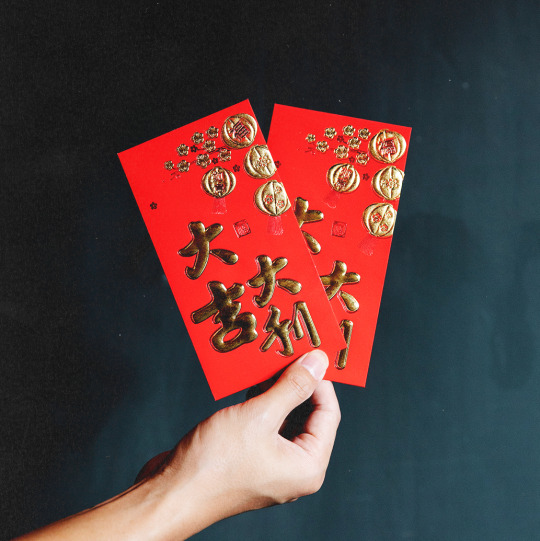
Two Red Hang Bao or Ampao typically given during Chinese New Year posted by Mikhaila Archer via Cosmopolitan (2022).
Christmas Caroling
youtube
Video of children caroling posted by Rauselle Pascua (2023) via YouTube
Christmas Caroling in the Philippines typically start at the beginning of the Simbang Gabi and ends on the 24th, with some caroling much earlier, where children to full adult groups may go door to door to carol for candy, food, or money. Children often go in groups and sing the typical Filipino Christmas songs with makeshift instruments such as tambourines made out of cans and small metal bits to make sounds, while teenagers and adult groups may go around from house to house with guitars and other portable instruments in order to receive cash.
The songs that they sing may range from traditional Filipino songs or modern Christmas songs from both local and international places.
I don't have a source for this one since I do want to look more into the history of Christmas Caroling in the Philippines maybe next year so enjoy this other video of a group of guys dancing Jingle Bells posted by SG TV (2019).
youtube
Side Story: I used to spend Christmas with my, honestly, wealthier grandmother and it wasn't uncommon for carolers to go up our door and just sing for candy or money. It often started on the 16th because caroling wasn't allowed any time before that. We used to have a weird little rule that children would get candy, while teenagers and adults will get money. Teenage boys would come around as whole groups with guitars and sing for money, while kids didn't mind the candy. After a while, there would be times that different people in the house would give candy away so we weren't able to keep track of which kid had already gone to our house. It wasn't until one of the people who worked for my grandma recognized a couple of kids that we realized that they've just been going around the neighborhood before doing another round when people may had already forgotten them. Honestly, I'm a little impressed.
Panunuluyan

Photo of a Panunuluyan posted by Philippines Tourism (@/MorefunTourism) (2018) via Twitter/X
The Panunuluyan is a traditional play that reenacts the night of Jesus' birth where Mary and Joseph were trying to seek shelter (NCCA Official, 2015). The name comes from the Filipino word tuloy which although typically mean "to continue" is used in this context to mean "to allow in" or "to enter in" referring to guests or visitors entering someone's home. Schools and churches typically do this play as part of their Christmas festivities but it isn't as common as it was in the past (Tan, 2016).
Panunuluyan is also called by different names such as Panawagan (en. announcement) in Cavite and Batangas, Kagharong in the Bikol region, and daigon, pakaon, and patores in Visayan speaking regions (NCCA Official, 2015).
Side story: I had a queer classmate who played Mary in one of these plays against their will in a seminary house production because their mom just said so and the place didn't had any afab people (because seminary house obv), and they ended up falling in love with the guy who played Joseph, serving as the only male crush they have ever had. Hilariously, on a seminary boy meaning a dude who wants to be a priest. I feel bad for them...
The Feast of the Three Kings

A photo of the reenactment of the Epiphany story in Gasan, Marinduque showing the three magi meeting with King Herod. Photo posted by Eli J. Obligacion (2011) via the blog Marinduque Rising.
Observed every 6th of January, the Epiphany or the Feast of the Three Kings is a religious observation that marks the formal end of the Christmas season in the Philippines. In the current day, most communities simply go to church to celebrate the epiphany, it was once a common practice to have a large celebration during the day which involves three people dressed up as the three kings, riding horses to the local church, distributing gifts to the townspeople. This practice is still done in some communities in the country today (Primer, 2021).
From photos I've seen of some of the festivities, two members of the three may put on blackface and/or redface to symbolize all three magis who are typically shown as having different skin tones as seen in the previously linked article from Primer, although some places instead have children play the parts of the magi without any blackface or redface.
Closing
As a kid, Christmas has always been special to me and now that I'm older, it's gotten a lot less cheery as all young adults may feel with the season getting less about joy and presents and more about either work and expenses. That sorta happened here when I was initially rushing this even when I was not in the mental headspace for it so taking a break was almost mandatory. I definitely feel a little bummed that I wasn't able to finish this the day of, but I can't really change it as much.
To those finishing my late extremely long-ass infodump about Christmas in the Philippines, thank you so much for reading and have a Happy New Year!
(Part 1: Etymology and History)
(Reference List)
#mayaposts#mayapino#filipino#philippines#culture#filipino culture#christmas#filipino christmas#history#filipino history#traditions#christmas traditions#filipino christmas traditions#colonial history#spanish colonial history#food#long post
5 notes
·
View notes
Text
Are there any cultures that your culture seems to be best friends with?
#by that i mean#geographically you’re in two different parts of the world#but you have similar foods languages cultural experiences etc#idk. anyway shoutout to most latinos bc wow filipinos have a lot in common with you#does this make sense? idk
13 notes
·
View notes
Text
filipinos (specifically filams) who claim they're PI without actually having any other PI heritage need to fucking touch grass you don't see indonesian or malay or taiwanese ppl pull this shit what fucking brain rot infested u guys. every time i see one of u cunts say "i dont feel asian enough to be considered asian 😔😔😔" you always list cultural and aesthetic traits that are present in south asia and asean but not east asia like tattoos, seafaring, having clothes more suited to a tropical climate, and brown features like bigger eyes, dark skin, body hair. the amount of times i've seen ppl say "but we look closer to PI ppl than Actual Asians(tm)". you're just fucking racist, to both asians and PI!
#i opened instagram. got blasted with a reel glorifying the aesthetics of visaya ppl and likening them to PI and polynesian ppls#die one thousand deaths#every time im like hey maybe i should try other socmed platforms and then i get blasted with this shit#(ik what the brain rot is and its usamerican propaganda pero pota ignorante pa kayo)#but like this mentality can only be excused for so much. you have a phone. call your homeland relatives and ask what they id as#you have the internet. ask a random homeland filipino OR a diaspora filipino what they id as.#filams try to excuse it as 'i grew up in hawaii/place with lots of PI so i identify closely with them because of similar culture/food'#i grew up in australia im not fucking white#i grew up in a suburb where BOTH filipinos and PI are significant populations and regularly mingle#if a filipino called themselves PI in front of us both filipinos and PI will laugh at u#delete later bc ive written this rant up a million times ugh
15 notes
·
View notes
Text
white people need to STOP I’M GONNA 😭😭😭
#saw this video of this girl eating balut (filipino duck embryo)#personally i’ve never tried balut and tbh i probably wouldn’t like it BUT ITS STILL MY#my filipino representation#BUT THESE RANDOM WHITE PEOPLE IN THE COMMENTS WERE LIKE ‘ermm you lost me at the duck embryo 🤢’#LIKE STFU GOD#WHITE PEOPLE WHEN ETHNIC FOOD ‘🤯🤯🤯’#GODDD 😭😭😭😭😭 I HATE IT I HATE IT I HATE IT SHUT UPPPPPPPPLL#okay sorry for this rant 😄 @ white people: plz don’t call different cultures food gross!! that’s not nice!! lol!!!!! 😄😄😄😄😄#porcelainposting
4 notes
·
View notes
Text





[FIERI: Feeding Filipino favorites to all their fans. I mean, the thing is addicting. Mm! FIERI: In 2013, I was in the Echo Park neighborhood of Los Angels, checking out a catering company with some roots. I came here for the food and I'm getting a bunch of the culture.]
#s37e01 finger lickin' chicken#guy fieri#guyfieri#diners drive-ins and dives#echo park neighborhood#filipino favorites#los angels#fieri#fans#thing#mm#company#roots#food#bunch#culture
6 notes
·
View notes
Text
Did some food stuff again! This was for my storybeats assesment and ngl it made me hungyyy
instagram
#food#food art#filipino#filipino cuisine#mindanao#visayas#filipino culture#realistic food art#Instagram
2 notes
·
View notes
Text
WE EATIN GOOD TODAY BABES
😙👌

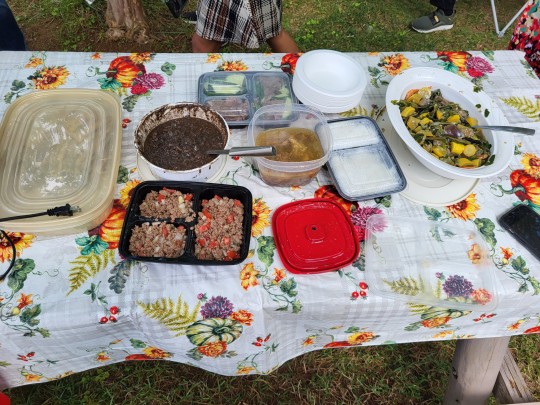

14 notes
·
View notes
Text
So turns out the solution to me feeling generally dissatisfied with everything I was looking at was to put on some music and hang out in fleshspace for a bit to make some pretzel dough for Mama.
#Actually my first time in a while since I've done anything for mother's day.#Last time was a couple years ago helping my dad make halo-halo (a Filipino dessert (highly recommend)) for grandma because heritage.#Unfortunately a bit harder to make cultural food when the recipient's ancestry is “white people everyone hates” ie British and German.#Beer pretzels were the thing I came up with that I'm pretty sure she'll like.#Besides breads are fun to make.#Also not much gets better than fresh flavorful bread.#We'll see how she likes them tomorrow.
1 note
·
View note